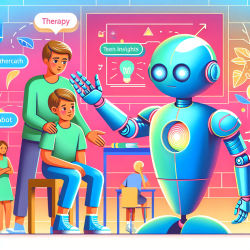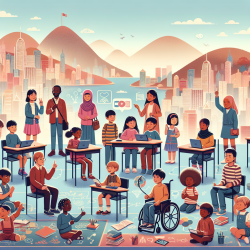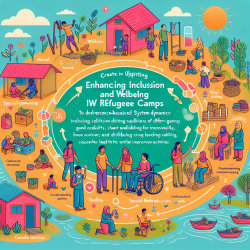In the ever-evolving landscape of child therapy, leveraging technology to create better outcomes for children is more critical than ever. One promising avenue is the use of social robots, particularly in school settings where stress is a significant issue for teens. A recent study titled Exploring Teens as Robot Operators, Users and Witnesses in the Wild offers invaluable insights into how social robots can be designed and utilized to support teens' mental health. Let's delve into the key findings and their implications for practitioners.
Understanding Teen Stress
According to the American Psychological Association (2014), teens are the most stressed age group, with school being a primary stressor. Chronic stress can lead to mental health issues such as depression and anxiety, affecting cognitive functions critical for learning (Vogel & Schwabe, 2016). Given these challenges, the study explored how social robots could be used to alleviate stress in teens.
Participatory Wizard of Oz Method
The study introduced a novel method called Participatory Wizard of Oz (PWoZ), which involves teens in multiple roles: as operators, users, and witnesses. This method removes the typical deception found in traditional Wizard of Oz studies, making the interaction more transparent and authentic.
- Operators: Teens control the robot's actions, such as speech and movement.
- Users: Teens interact directly with the robot, sharing their stress stories.
- Witnesses: Teens observe the interaction, providing additional feedback.
Key Findings
The study revealed four main themes that can inform the design and implementation of social robots in therapeutic settings:
- Authenticity: Teens valued genuine interactions, both in their operation of the robot and in the robot's responses.
- Empathy: Empathetic responses from the robot, whether verbal or non-verbal, led to emotional connections with the users.
- Emotional Engagement: Teens exhibited strong emotional responses, such as laughter and social referencing, indicating high levels of engagement.
- Imperfection Creates Connection: Unintended actions or "errors" by the robot often led to increased engagement and connection among teens.
Practical Applications
For practitioners, these findings offer several actionable insights:
- Design for Authenticity: Ensure that robot interactions feel genuine and relatable to teens.
- Focus on Empathy: Program robots to offer empathetic responses, both verbally and through movements.
- Encourage Emotional Engagement: Use the robot to facilitate emotionally engaging activities that resonate with teens.
- Embrace Imperfection: Allow for some level of imperfection in robot interactions to make them more relatable and engaging.
Next Steps
The study underscores the need for further research to refine the design and functionality of social robots. Practitioners are encouraged to engage in participatory design processes with their young clients to better understand their needs and preferences.
To read the original research paper, please follow this link: Exploring Teens as Robot Operators, Users and Witnesses in the Wild.










